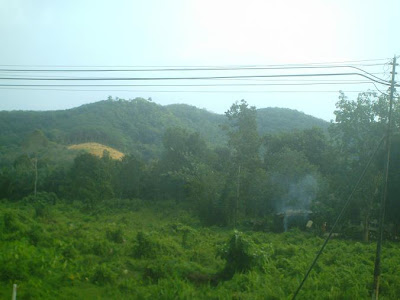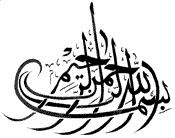
Anyway, I would try as best as I could to tell a good story here for the benefit of all, and also for letting go whatever that have lodge in my heart and mind that at times become too much a heavy burden of knowledge that I must let go. After all I still got plenty of piled-up stories outstanding that needs to be told based on the collection of pictures taken from the Perak trip made over a month ago. So excuse me if there's any lapse here and there ya...


What happened was from Sungai Siput, we met another friend Badrul in Ipoh and did our Friday congregational prayers at the Perak state mosque. From there we went on a tour visiting old tombs in Kota Bahru, Gopeng and the ones from Kampung Gajah till Bota Kanan before finally heading for Beruas which was actually the destination Syahir wanted to go to for a long time having read on my travels at my blogspots and also in my novel series "Berpetualang ke Aceh"...










Now the old Malay text Sulalatus Salatin also known as the Malay Annals written by a certain Tun Sri Lanang in 17th Century AD mentioned that during the reign of Sultan Mahmud who ruled Melaka at the end of the 15th Century, there were two kingdoms constantly at odds, Manjung and Beruas. Sultan Mahmud decided to send aid to Beruas to subdue Manjung. The king of Beruas then pledge allegiance to the king of Melaka. The story further said, thus he was conferred the title Tun Aria Bijaya, that is if I remember correctly.
Whatever, I'm sure the title given by the king of Melaka to the king of Beruas was a Tun. What disturbs me was the title Tun is normally conferred to those of noble ministerial status, not royalties... It means the king of Beruas is not only lower in status but only ranks as a minister in Melaka, certainly not among the royals and princes...


Well, since Melaka is big Malay empire of the time and Beruas considered a small country, then it does make sense that a royal in Beruas is equivalent to only a noble in Melaka. But what disturbed me was that I now, once upon a time, before the state of Melaka was established by Sultan Iskandar Shah (known in the West as Paramewara) sometime in the 1400s, Beruas used to me a huge kingdom as big as Melaka during its heydays... And I know for sure, the king of Beruas was of the same if not higher status than the king of Melaka as the king then came from a much acclaimed lineage related to the kingdom of Samudera-Pasai, the pivotal kingdom where Islam came to and then got spread all over the Malay Archipelago...

OK... There's a story saying that the kingdom of Beruas was opened by a prince from Aceh known as Malikul Mansur. The story goes that he had done some wrong by taking a woman from a palace. Thus he was banished from his original place in Aceh and that's when he opened Beruas.
Now, there's a text called Hikayat Raja-raja Pasai (The annals of the kings of Pasai) said to be the oldest Malay text known in existence. The text believed to have been written at the latest the 15th Century mentioned about the twin kingdoms of Samudera Pasai opened by a pious king known as Sultan Malikus Salih. When he passed away, Pasai was ruled by his grandchild Sultan Malikul Mahmud while Samudera was ruled by Malikul Mahmud's younger brother Malikul Mansur. The kingdoms existed side by side, the stories said divided by a river...
One day Malikul Mahmud went out hunting somewhere far from his palace. Soon enough Malikul Mansur also went out hunting and passed his brother's palace and saw a beautiful woman. He decided to take the woman and bring it to his own palace. To cut a long story short, that made Malikul Mahmud mad and he then caught Malikul Mansur. Thus the younger brother was banished, according to Hikayat Raja-raja Pasai to a place called to Temiang, according to Sulalatus Salatin (which mentioned the same story with slight variations) to Manjung.
Perhaps Temiang and Manjung refers to the same place... Perhaps that's where Beruas originally started before its boundaries spread to cover other areas even far away. Perhaps... Nevertheless, the legends in Beruas refer to this Malikul Mansur as the prince from Aceh (before it was known as Aceh, that is as Samudera-Pasai which later became a part of Aceh) who opened Beruas. Now, if Malikul Mansur who came from a highly acclaimed Malay royal lineage was the first king of Beruas then why is the later king considered equivalent only to a noble in Melaka, that is come Sultan Mahmud's (not Malikul Mahmud ya) time at the end of the 15th Century AD?

OK... And so Sultan Malikul Mansur, the grandchild of the very famous pious king Sultan Malikus Salih (said to be known as Merah Silu before he was properly installed as a Muslim king) opened the kingdom of Beruas. This man who becomes the first king of Beruas and his pedigree of lineage is ranked highly in the pantheon of ancient Malay kings. The kingdom of Pasai (which then absorbed the kingdom of Samudera) was rated as among the two of the same class of Melaka. So how come the later king of Beruas is rated the same as a noble in Melaka?

For some time, I pondered upon the question of why the king of Beruas during the time of Sultan Mahmud was ranked like a noble when I came across a book which would give clues on what actually transpired. The book says, after sometime reigning in Beruas, Sultan Malikul Mansur was called back to return to Samudera. The story goes, Sultan Malikul Mahmud of Pasai started to miss his brother and regretted banishing him away... So he called him back.
Before that, some friends of Sultan Malikul Mansur by the name of Shamsul Bahrin and Daik Ismail had come from Samudera or Pasai (I'm not sure which kingdom but it is somewhere from there) to pay him a visit. When Malikul Mansur received the news that his brother wanted him to return, he granted the throne of Beruas to Shamsul Bahrin lock, stock and barrel...
Malikul Mansur left with his whole family for Samudera. When Shamsul Bahrin died, Daik Ismail was made the ruler. This means whoever ruled Beruas afterwards was not from the bloodline of Malikul Mansur but most probably from the bloodline of nobles loyal to Malikul Mansur. That should explain why a later king was treated like a noble in Melaka...

Some say this whole area of Kampung Kota which was once a centre of administration for the whole kingdom of Beruas is just literally the tip of the iceberg. They said, what we see is actually just the roof of the city.. The ancient mythical city which lies submerged underground waiting for the time to resurface back again one day!

OK... The title of this article says "The ancient kingdom of Beruas and its ties with the more ancient kingdom of Gangganegara!"... So where's the story about Gangganegara?
For the record, Gangganegara is supposed to have existed as early as the 2nd Century AD while Beruas is supposed to have been opened by Sultan Malikul Mansur either at the end of the 13th Century or sometime early 14th Century. Whatever, there should be a space of more than 1,000 years between the openings of these two ancient kingdoms...
Now, Gangganegara is said to be a Hindunised state while Beruas is an Islamic kingdom. The Malay text Sulalatus Salatin mentioned Gangganegara was once ruled by a king named Gangga Shah Johan. At that time there was king from India or Hindi named Raja Suran, said to be a descendant of the great king Raja Iskandar Zulkarnain (some said Alexander the Great who thrived sometime in 330 BC, others said Cyrus the Great of 550 BC Persia or so) who wants to conquer all of the known world. So Raja Suran attacked Gangganegara and killed Gangga Shah Johan. In the process, the kingdom of Gangganegara was laid to waste and bare...

Back to the story of Gangganegara. History scholars said the attack of Raja Suran actually refers to the attack of a certain Indian king known in history as Rajendera Chola sometime in year 1020 or so. However going by what's written in the ancient Malay texts, I somehow believed Raja Suran lived sometime in the 7th Century BC.
Whatever, the kingdom of Gangganegara was laid to bare. It only came to life again when Sultan Malikul Mansur gave rise to the kingdom of Beruas, an Islamic kingdom which some says is the precursor to the existence of the kingdom of Melaka. Enough said... :]










3 comments:
Ke mana keturunan orang gangga negara ye? Saya ada dengar yg ada satu keturunan raja di semenanjung yg mengaku dia ada darah org gangganegara.xtau la betul ke tidak.Sejarah asal org melayu asli Perak sebelum pendatang dr Sumatera(Acheh) masuk ke tanah mereka..wallahualam..
Salah satu keturunan Yang memerintah Daerah mukim Manjung Beruas ialah Keturunan Tok Mahsuka bermastautin di Pasir Panjang Perak.
Ada orang yang mengatakan kerajaan di sekitar Pengkalan Bharu, Pantai Remis (dulunya muara sungai Beruas) di bawah raja Mahakarma dengan negaranya 'Anta Beranta' terlebih lama lagi dari kerajaan Beruas. Kata penduduk tempatan di sini, kerajaan tersebut musnah samasekali akibat peperangan besar yang melibatkan jutaan orang terbunuh di sekitar Padang Lenga dan Matang Acheh, tidak jauh dari Pengkalan Bharu.
Menurut kata Tok Baniah, pada zaman dulu.. seekor kucing boleh berlari dari Segari hingga ke Padang Serai sejauh 10 KM tanpa menyentuh tanah. Maksudnya, kawasan tersebut mempunyai kepadatan penduduk yang tersangat tinggi di mana rumah-rumah dibina rapat dalam jumlah yang sangat besar. Begitulah kehebatan kerajaan Anta Beranta ini, Wallahu-aklam ..
Post a Comment